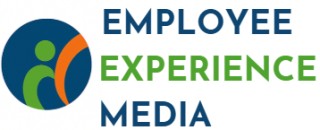
Navigating the Basics of Personal Leave
The Essentials of Personal Leave in California
Understanding the basics of personal leave is crucial for both employers and employees in California. This type of absence generally refers to time away from work that an employee takes for personal reasons, which could range from dealing with a serious health condition to caring for a family member. The Family and Medical Leave Act (FMLA) plays a significant role here, providing eligible employees with the right to take unpaid, job-protected leave for specified family and medical reasons. In California, employees can benefit from unique leave laws designed to accommodate various needs, such as paid sick leave and pregnancy disability leave. These allow workers to manage health conditions without compromising their employment status. However, it is essential to understand the different types of leave available, as well as the eligibility criteria employees must meet. Employers in California are required to provide specific leave benefits under the law. For instance, the state mandates that eligible employees receive a certain amount of paid sick leave days. Understanding these obligations can help employers ensure compliance and create a workplace culture that respects employee rights. Employees should be aware of how taking leave might impact their work and personal life, including their rights and responsibilities. Knowing how to effectively request leave, manage the time away, and plan for a smooth transition back into the workforce can greatly enhance the employee experience. For more insights on effective strategies for employee well-being, feel free to explore effective strategies here. This could be particularly beneficial when considering personal leave options.Legal Framework and Employee Rights
Understanding Employee Rights Under Personal Leave Laws
Navigating personal leave, especially in California, requires a good grasp of the relevant legal frameworks and employee rights. California employees benefit from a variety of leave types, protected by several laws including the Family and Medical Leave Act (FMLA) and the California Family Rights Act (CFRA). One of the primary entitlements under the FMLA and CFRA is the right to take unpaid leave for specific family and medical situations. Eligible employees can take up to 12 workweeks of leave in a 12-month period for various reasons, such as:- Caring for a family member with a serious health condition
- Addressing one's own serious health condition
- Welcoming a new child into the family through birth, adoption, or foster care placement
Employer Responsibilities and Obligations
Employer Obligations When Managing Leaves of Absence
For employers in California, understanding the legal responsibilities surrounding personal leave is crucial in maintaining compliance and supporting employee well-being. Employers must be well-acquainted with a range of leave laws, including the Family and Medical Leave Act (FMLA) and California's own family rights legislation, to effectively manage both routine and challenging scenarios. Here's what employers need to know:
- Provide Information: Employers are required to inform eligible employees of their rights to leave including FMLA leave for serious health conditions or family care. Written notice or employee handbooks can serve this purpose.
- Certify Leave Requests: When a leave is due to a serious health condition, employers can request certification to substantiate the need for medical leave. It is important, however, to handle these requests sensitively to respect employee privacy and health confidentiality.
- Maintain Health Benefits: During FMLA leave, health benefits equivalent to group health plans must be continued. Whether the absence is a pregnancy disability or care for a family member, ongoing healthcare support is essential.
- Job Protection: Upon conclusion of the leave, an employee should be reinstated to their original position or an equivalent one, ensuring no loss of employment status or benefits, unless exceptions are outlined in law.
- Leave Types and Application: Employers must differentiate between paid and unpaid leave, as well as sick leave versus other types of leave absence. Understanding distinct leave laws such as those governing unpaid FMLA and paid sick leave policies is fundamental.
- Documentation and Record Keeping: Accurate and thorough records of all leaves are mandatory. This not only helps with compliance but also aids in assessing the organization's capacity to handle such absences.
Adapting to these responsibilities can rather enrich the employee experience by demonstrating organizational support and care. For more insights into promoting a positive workplace environment, feel free to explore creative ways to engage employees during different occasions.
Impact on Employee Experience
How Personal Leave Affects Employee Experience
Understanding how personal leave can affect employee experience in California involves considering a complex interplay between employment policies and personal well-being. Employees often find themselves balancing work responsibilities with personal and family needs, which can impact their experience at work. Employees dealing with serious health conditions or family requirements such as caring for a family member may opt for leave. The Family and Medical Leave Act (FMLA) provides eligible employees with the right to take unpaid leave for serious health issues or family care without jeopardizing their job security. Companies in California are expected to adhere to leave laws, including offering paid sick leave, pregnancy disability leave, and other types of leaves of absence. When employers effectively manage these leaves, it reflects positively on employee experience by fostering a supportive and understanding work environment. However, when employees perceive these leave policies as inflexible or when employers fail to communicate clearly about their rights and responsibilities, it can hinder the overall morale and satisfaction within the workplace. In addition, the integration of health and welfare benefits can smooth the transition during a leave of absence. While laws provide a framework, how these policies are implemented can deeply affect employee loyalty and commitment. Ensuring employees are well-informed and supported helps mitigate stress and absenteeism, enhancing their overall work experience.Practical Tips for Employees
Making the Most of Your Personal Leave
Understanding how to effectively navigate a personal leave can greatly enhance your experience during this period of absence. Whether it’s a medical leave, family leave, or another type of leave, proper planning and awareness are key. Here’s how you can make this time work in your favor:- Know Your Rights: Educate yourself on the specific leave laws applicable in California. For instance, knowing the FMLA guidelines and understanding how they intersect with state laws can ensure you're not missing out on benefits that might apply to serious health conditions or family care situations.
- Communicate with Your Employer: Maintain open lines of communication with your employer. Discuss the nature and intention of your leave. This can facilitate smoother planning on both ends and make sure that upon your return, the transition back into your work environment is seamless.
- Document Everything: Keep records of all communications and documents related to your leave. This includes medical notes, correspondence with HR, and any official forms. Having a detailed paper trail helps in case any disputes arise regarding your leave.
- Take Care of Yourself: Use this time to focus on the primary reason for your leave. Whether it’s recovering from a serious health condition or providing care for a family member, prioritize what’s essential to maximize the benefit of the leave period.
- Explore Support Options: Look into employer-provided resources or external support such as paid sick leave, pregnancy disability leave, or dedicated family care options. These resources can alleviate both financial and emotional burdens during your absence from work.
Case Studies and Real-Life Examples
Exploring Real-World Scenarios
In understanding personal leave of absence in California, looking at real-life examples can provide valuable insights. These scenarios offer a clearer perspective on how these laws and practices are applied and affect both employees and employers.
Consider a case where an employee in California required a medical leave of absence due to a serious health condition. Under the FMLA and California leave laws, the employee was entitled to unpaid leave. The employer was tasked with ensuring that the employee’s job was protected during this period, reaffirming the legal framework and employee rights discussed earlier. This example highlights the importance of employers fulfilling their responsibilities, which directly impacts the employee’s experience and trust in their company.
In another instance, an employee sought to take a personal leave to care for a family member with a critical health condition. The leave was essential for providing necessary care, and the policies set by their employer aligned with California’s comprehensive leave laws. It’s a testament to how vital employer support and understanding can be in such situations. However, the employee faced challenges balancing unpaid leave with financial responsibilities, which underscores the significance of considering paid leave options or alternatives like pregnancy disability leave, where available.
Real-world examples like these underscore key themes discussed throughout this article. They illustrate how personal leave of absence impacts not just the immediate logistics of work, but the overall employee experience. It reiterates the importance of clear communication and support systems that cater to both legal requirements and the personal needs of employees.













